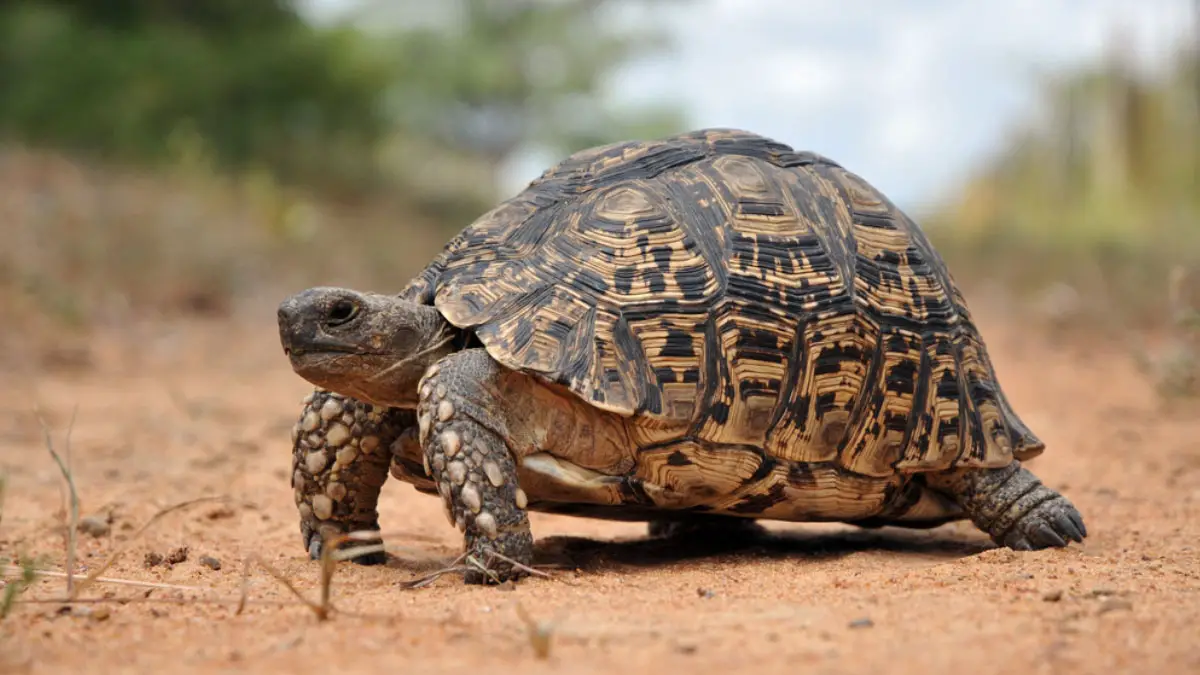The Ultimate Guide To Various Types Of Tortoise Species In The UK!
Tortoises are fascinating animals that belong to the Testudinidae family and can live for up to 150 years. If you are a resident of the UK and want to keep a tortoise as a pet, you must be aware of the many species that may be found there.
So, what types of tortoise species can you find in the UK? The UK is home to several types of tortoise species. Some of the most common tortoise species found in the UK include Hermann’s tortoise, the Spur-thighed tortoise, and the Marginated tortoise.
We shall look at the several kinds of tortoises that can be found in the UK in this article, as well as their physical characteristics, habitats, and eating habits.
What Are The Types Of Tortoise Species Found In The UK?
Contents
Did you know that in the UK, there are no tortoises that naturally live in the wild? However, there is one particular species called the Hermann’s Tortoise (Testudo hermanni) that you might come across.
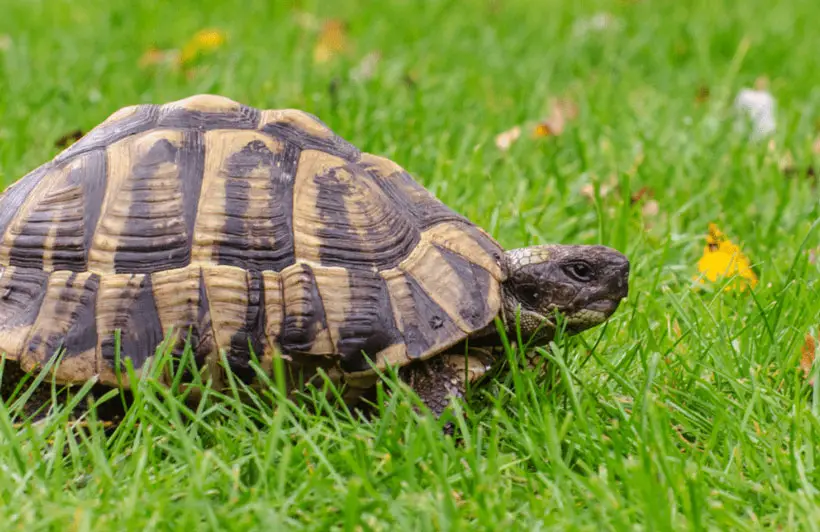
These tortoises are not originally from the UK but are brought in from countries like Greece, Italy, and North Africa, where they are native. Once they reach the UK, they join the pet population where they are mostly cared for by devoted owners in carefully supervised conditions.
Although they are not native to the UK, it’s interesting to see how these tortoises have gained popularity as pets there. We have prepared a table below so that you can clearly comprehend the different species of tortoise found in the UK as well as their physical traits, diet, habitat and lifespan.
| Name | Size | Lifespan | Range | Diet | Special Features |
|---|---|---|---|---|---|
| Hermann’s Tortoise | They normally grow to be 6-11 inches long and 7 to 9 pounds in weight. | 50-100 years | Found in southern England and parts of North Africa. | They feed on plants, grasses, and weeds | They have dark shells with radiating yellow or orange markings. |
| Leopard Tortoise | They normally grow to be 16-18 inches long and 29-55 pounds in weight. | 50-80 years | Found in eastern and southern Africa, including Kenya, Tanzania, South Africa, and Namibia. | They are herbivorous and eat grasses, weeds, and fruits. | Has a unique shell pattern, which resembles a leopard’s markings. |
| Spur-Thighed Tortoise | They normally grow to be 6- 10 inches long and 10-15 pounds in weight. | 50-100 years | Found in southern Europe, North Africa, and the Middle East. | They feed on grasses, insects, flowers, and some fruits. | They feature prominent spurs on their hind legs and a rounded, high-domed shell. They may thrive in desert conditions. |
| Marginated Tortoise | They normally grow to be 12-14 inches long and 11-15 pounds in weight. | 80-100+ years | They originated in southern Europe, specifically in Italy, Greece, and the Balkans. | They enjoy eating carrots, parsley, kale, spring greens, and leafy plants. | Their long, broad shell has noticeable growth rings on it. They are renowned for their climbing skills. |
| Horsfield’s Tortoise | They normally grow to be 6-10 inches long and 2 pounds in weight. | 40-60 years | They originate from Central Asia, including Afghanistan, Russia, and China. | Their diet consists of carrots, parsley, coriander, and spring greens. | They can survive extremely high and low temperatures and have a high-domed, yellowish shell. |
| Indian Star Tortoise | They normally grow to be 8-10 inches long and 10-15 pounds in weight. | 30-50 years | They are native to India and Sri Lanka | They feed on berries, leafy greens and vines. | They have a beautifully patterned shell with patterns resembling stars. |
| Red-footed Tortoise | They normally grow to be 11-14 inches long and 20-30 pounds in weight. | 50-60 years | They can be found in South America, including Brazil, Colombia, and Ecuador. | They consume fruits, vegetables, leafy greens, mushrooms, and insects. | They have a domed shell with a reddish tinge on their legs and head. |
1. Hermann’s Tortoise (Testudo hermanni)
Hermann’s Tortoise is native to southern Europe, but you can also find them as pets in the UK. These little creatures are popular for their unique yellow and black shell pattern that makes them stand out in any crowd. They are only 20-30 cm in length and weigh 1.5 to 3.5 pounds.
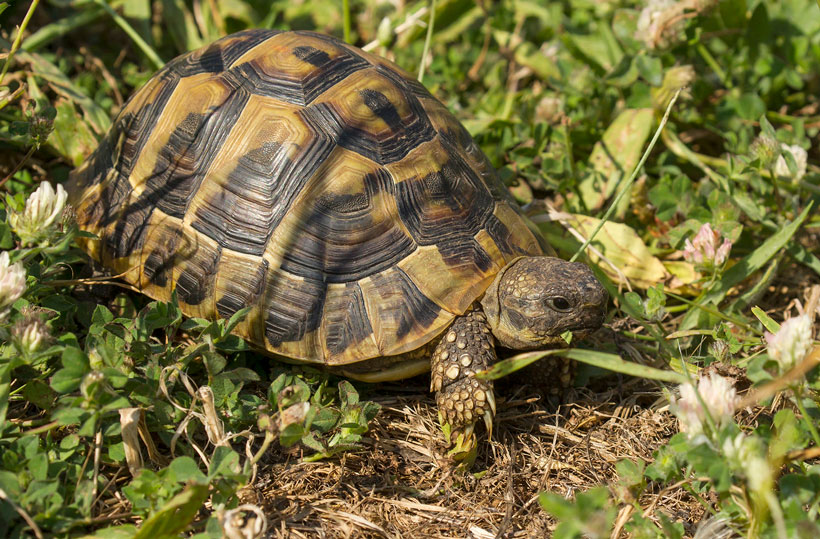
These tortoises also have a lifespan of 50-80 years. Hermann’s tortoises are herbivores, which means their diet mainly consists of leafy greens, wildflowers, and fruits. In their natural habitat, they prefer a dry and rocky environment, such as hillsides, meadows, and rocky outcrops.
Additionally, they can thrive in a variety of conditions, making them a great choice for pet owners looking for a low-maintenance pet.
2. Spur-Thighed Tortoise (Testudo graeca)
The Spur-Thighed Tortoise, commonly referred to as the Greek tortoise, is a medium-sized terrestrial animal that inhabits grasslands, rocky hillsides, and shrublands.
These remarkable animals are easily recognized by their high-domed, oval-shaped shells that range in color from light yellow to dark brown. They are adept climbers, and diggers thanks to their strong legs and pointed claws.
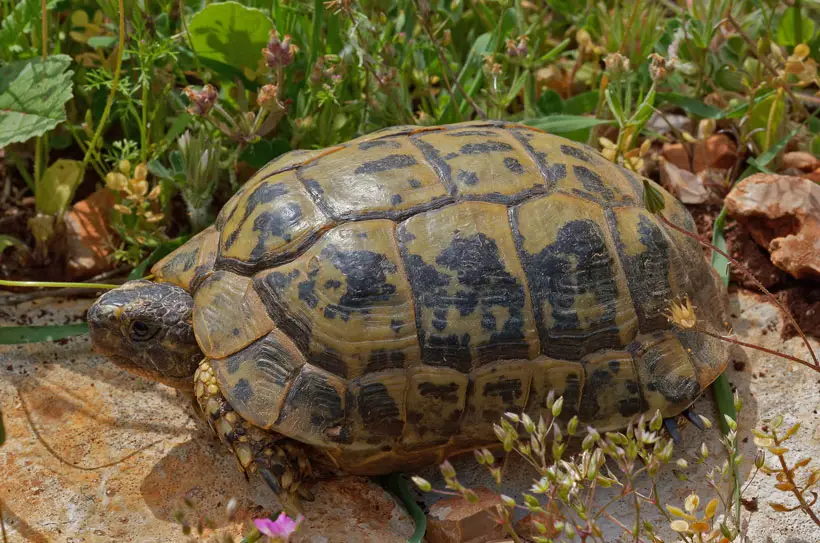
Did you know these tortoises can live for over 50 years? They are primarily herbivores, although they occasionally snack on small insects and invertebrates. As solitary and territorial animals, they can survive extreme temperatures and are frequently spotted soaking in the sun.
3. Marginated Tortoise (Testudo marginata)
The Marginated Tortoise, or Testudo marginata, is a fascinating species native to the Mediterranean region. Did you know that the Marginated Tortoise is one of the largest tortoise species in the Mediterranean?
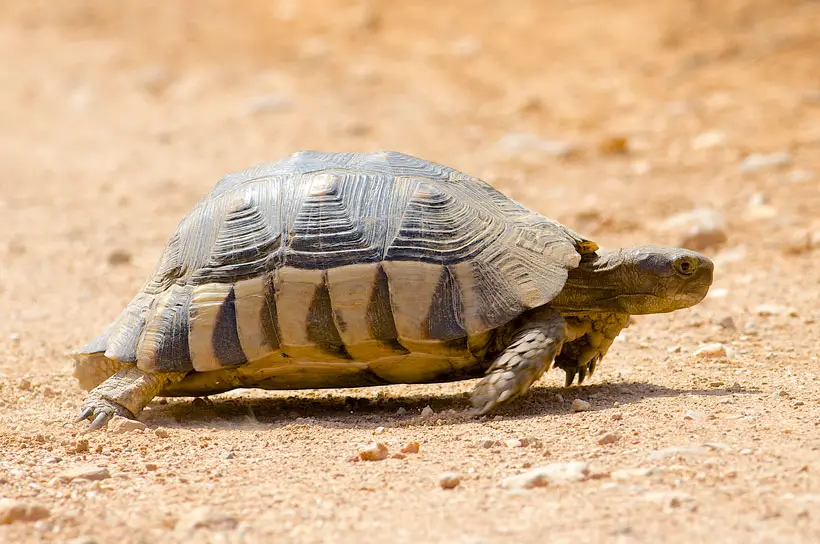
Marginated tortoises have yellow-brown colored limbs, sharp claws, and a domed shell with a hinged plastron. They are herbivorous and enjoy feeding on a variety of grasses, weeds, as well as fruits and vegetables.
They dig burrows for shelter during extreme temperatures and are known for their friendly and docile personality.
4. Horsfield’s Tortoise (Testudo horsfieldii)
These little critters are small in size, growing up to 16-25 cm in length. They have a distinctive dome-shaped shell that makes them stand out from the crowd, and they can live up to 50-60 years.
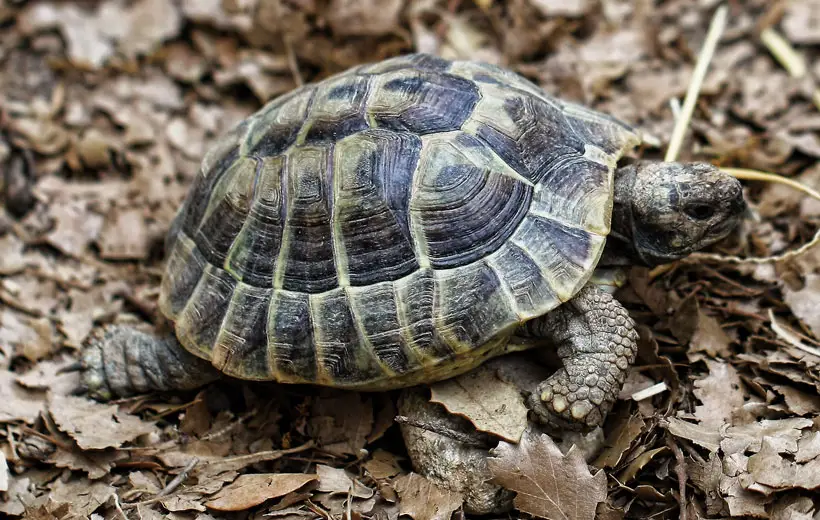
Their diet consists of leafy greens, flowers, and fruits. They have a healthy appetite and enjoy a varied diet of fresh produce. One fun fact about them is that they love dandelion leaves!
These hardy creatures prefer a dry and sandy habitat, such as deserts, grasslands,and have adapted to living in harsh environments.
5. Leopard Tortoise (Stigmochelys pardalis)
Did you know that the Leopard Tortoise is named after its unique leopard-like markings on its shell? They can grow up to 18 inches long and have a lifespan of up to 80 years. They are indigenous to southern and eastern Africa.
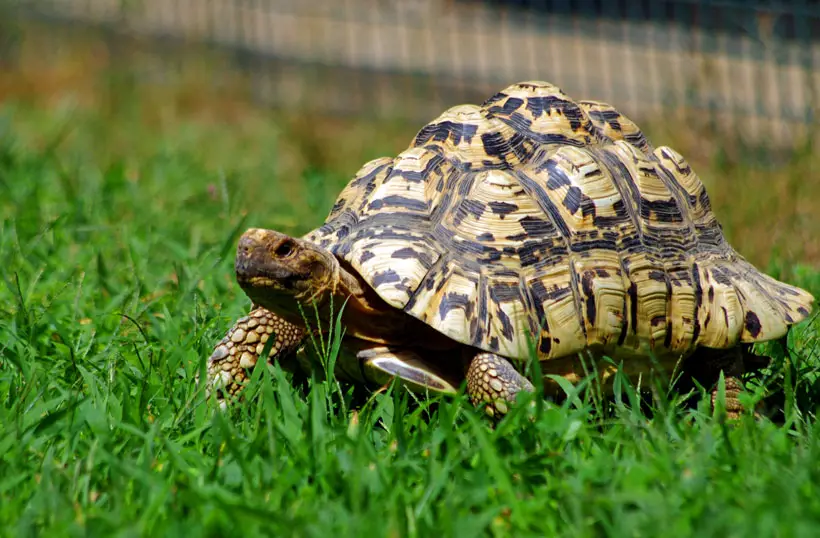
In the UK, people frequently choose to keep these tortoises as pets because of their friendliness. If you want to keep one as a pet, be sure to give it a sizable enclosure with lots of room and a basking area with a UVB light to help it maintain its body temperature.
6. Indian Star Tortoise (Geochelone elegans)
The Indian Star Tortoise is popular for its unique star-like pattern on its shell, which consists of yellow markings on a dark background. The shell itself is slightly domed and has a smooth texture, which makes it a perfect surface for basking in the sun.
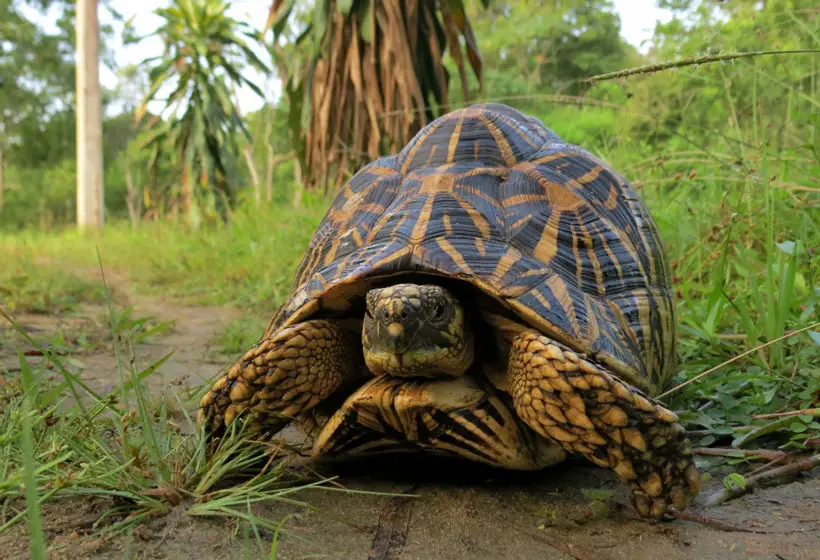
They are also less territorial and can often be found in the semi-arid regions of the UK. Did you know that the Indian Star Tortoise has a fascinating defense mechanism? These tortoises are able to blend into their environment when they are in danger thanks to the unusual hue of their shells.
7. Red-footed Tortoise (Chelonoidis carbonarius)
For many reptile fans, Red-footed tortoises make a popular pet because of their calm nature and friendliness. Sadly, habitat loss and hunting have put their population at risk. In fact, they are listed in Appendix II of the Convention on International Trade in Endangered Species.
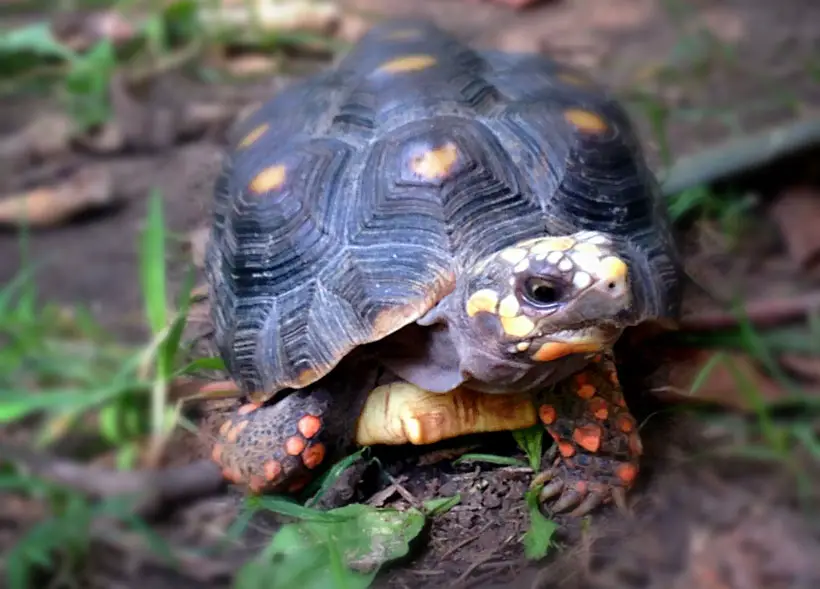
Red-footed tortoises have striking red scales on their legs and head, which can be either bright orange-red or brownish-red in color. As herbivores, they love to munch on fruits, flowers, and grasses.
What Are The Threats Faced By Tortoise Species In The UK?
You might be surprised to learn just how many risks there are to tortoises in the UK. A list of the threats to tortoises in the UK is provided below.
- Prone to diseases: Tortoises are vulnerable to diseases such as respiratory infections, shell rot, and parasitic infections. Captive tortoises are particularly at risk of these diseases due to stress from being in an unfamiliar environment and exposure to other animals.
- Climate change: Climate change is a serious threat to the survival of tortoises in the UK. Tortoises rely on warm temperatures to regulate their metabolism and body temperature.
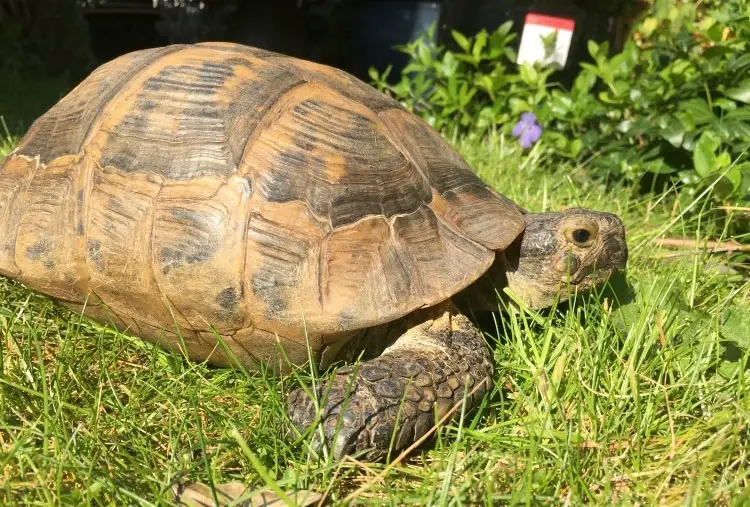
When temperatures increase, they can struggle to manage their body temperature, leading to heat exhaustion and dehydration.
- Road mortality: Tortoises are at risk of road mortality as they are slow-moving creatures that frequently cross roads while searching for food or mates. Their slow movement and low profile make them hard to spot for drivers, increasing the chances of accidents.
- Illicit tortoise trade: The enormous demand for pet tortoises in the UK has sparked a thriving black market that threatens the survival of several different tortoise species. The ease of entrance and greater pricing, such as a £1 tortoise selling for over £100, have allegedly promoted the illicit pet trade in the UK.
How To Take Good Care Of Pet Tortoises In The UK?
Tortoises are a common choice for a pet in the UK because they are inexpensive and low-maintenance. Follow the tips provided below to learn how to care for your pet tortoise.
- Keep an eye out for symptoms of disease in your tortoise, such as lethargy, appetite loss, reduced movement, or respiratory issues.
- In warm weather, allow your tortoise to spend time outside in a secure enclosure with access to shade.
- You must regularly clean and replace the substrate in your pet’s cage to prevent the growth of harmful germs and parasites.
- Give your tortoise a shallow bowl so it may easily drink from it.
- Give your tortoise a healthy diet consisting of a variety of leafy greens, vegetables, and fruits, and refrain from giving them high-protein foods.
- Handle them gently and avoid picking them up by their shells.
- You should provide a large cage with access to UVB lighting and a basking area that is about 30°C warm for your pet tortoise so that it can regulate its body temperature.
For more information, you can watch this YouTube video.
FAQs
Take a look at the frequently asked questions we’ve included below if you want to learn more about tortoises in the UK.
In the UK, a variety of conservation measures are in place to safeguard the tortoise species. They include breeding programs, habitat restoration projects, and community outreach initiatives. Laws and guidelines are also in place to stop the unlawful trading of tortoises.
In the UK, certain species of tortoise can be kept outside throughout the summer. But only if they have access to a proper shelter and can maintain the right temperature and humidity levels.
Final Words
To sum up, the UK is home to a diverse array of tortoise species. From the Spur-thighed tortoise to Hermann’s tortoise, the Marginated tortoise, and the Horsfield’s tortoise, there are several different types of tortoise species found in the UK.
If you are considering keeping a tortoise as a pet, it is important to understand the unique needs of the species you are interested in. You can consult a qualified vet to provide your pet tortoise with the best care possible.
Don’t forget that taking care of a tortoise is a long-term commitment. So make sure you’re ready for the responsibility before bringing one home!

